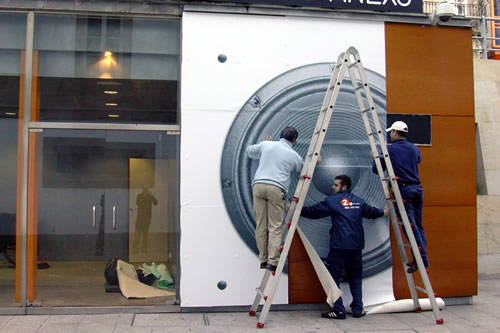About Escoitar.org

Very soon more information in this language.
Forgive the inconveniences.
Staff Escoitar.org
The western obsession to favour the visual aspects of the culture over other perceptive capacities, like the hearing, putting in second place those existential experiences considered less significant, largely for its ephemeral character. In the 20th century we are living an increasing interest for the sonorous phenomenon, beyond the music and the acoustic physics, where the environmental sounds are revealed as an interesting object of interdisciplinary study (anthropology, sonorous ecology, bioacustic, cognitive sciences, architecture, artistic creation …). Natural or a construction product of the modern societies, the sounds that surround us are part inevitable of our lives and of our collective memory, appearing as an inestimable material for the comprehension of the cultures and the societies that generate, use or perceive these sounds. For this reason, the attitude towards the sound of a place must not be only positive, it must be studied to identify the components’ worth to be preserved, or even restored. An approximation to the sound of a place is an approximation to its immaterial patrimony, which can be gathered with strictly documentary purposes, or, as in Escoitar.org, as raw material for cultural analysis, artistic creation and to promote cooperation and debate on net.
The sounds are not renewable materials and to capture them and expose them implies enlarging their life, generating new spaces, alive and mutants.
To perceive, to understand and to conceive our sonorous identity, that of our places, its coherence and its idiosyncrasy is a necessary and healthy exercise.
To find the bioacustic balance of a place, to create portraits or Sonorous Postcards, and to create a situation map (online) and a description of these places through its sonorous landscape helps the construction of a geographical zone identity; the sound as patrimony, the sound as historical document. All this is thanks to the possibilities that the net offers as an horizontal and democratic system.
With this purpose in mind, a piece of software was developed for the free publication of sonorous landscapes (Social Soundscapes) that allows to any user to collaborate, uploading audio to the system and placing it automatically in the geographical place where it was recorded (the sonorous patrimony agreed by consensus). This is the main aim of this project whose space of documentation you are seeing.
…………………………………………………………………………………………………… ………………………………………………………………………………………………….. ………………………………………………………………………………………………….. ………………………………………………………………………………………………….. …………………………………………………………………………………………………. …………………………………………………………………………………………………. ……………………………………………………